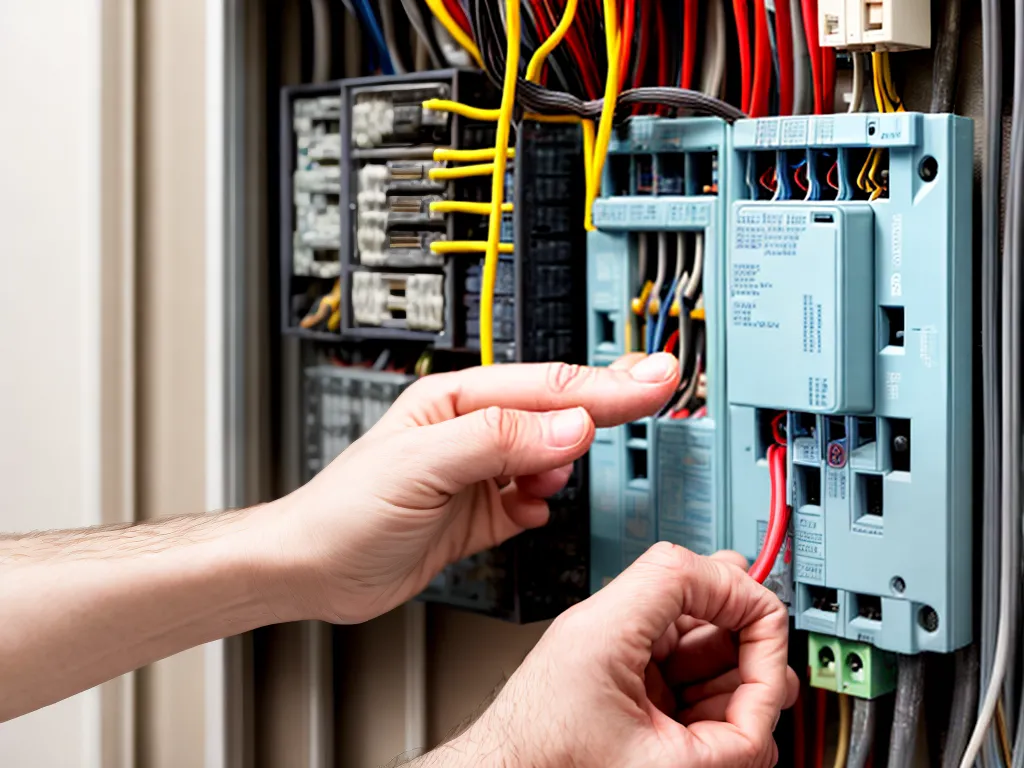
How to Rewire Your Home's Electrical System Yourself on a Limited Budget
Assess Your Electrical Needs
The first step in rewiring your home's electrical system is to assess what your needs are. Take a look around your home and make a list of what runs on electricity - lights, outlets, major appliances, etc. This will help you determine if your current wiring is sufficient or if you need to upgrade. Pay special attention to high load areas like the kitchen or laundry room. You may want to add more circuits to prevent overloading.
Key things to consider:
- Number of lighting fixtures and outlets in each room
- Wattage requirements of major appliances
- If you need to run wiring for new appliances or equipment
- If your home's electrical panel needs upgrading
Knowing exactly what your electrical needs are is crucial for planning out your rewiring project.
Create a Wiring Plan
Once you've assessed your needs, the next step is to map out a wiring plan. Sketch out each room in your house and mark where you want outlets, switches, and lighting fixtures.
Here are some tips for your wiring plan:
- Indicate which circuits each outlet and light will be on. color code if needed.
- Note any new wiring runs that need to be made.
- Mark the locations of your electrical panel, junction boxes, and any other components.
- Plan for more outlets than you think you need. It's easier to wire for more now than add later.
Having a detailed wiring plan is important so you buy the right materials and understand how everything needs to be wired.
Purchase Electrical Supplies
With your wiring plan in hand, you can now make a list of all the electrical supplies you'll need.
Some essential items include:
- Wire - Choose the correct gauge wire for your home's amperage needs. Have extra on hand.
- Breakers - Make sure your electrical panel has enough open slots for new circuits.
- Junction boxes - You'll need these to house wire connections.
- Outlets and switches - Buy high-quality commercial or spec grade. Purchase weatherproof outdoor covers if needed.
- Conduit - Useful for protecting wire runs and allowing easy replacement.
- Wire connectors - Get lever lock connectors for a reliable crimp.
- Cable staples/clips - To attach and route wires safely.
Shop sales and clearance sections for deals. Buying supplies in bulk can also save money.
Rewire One Circuit at a Time
Now comes the fun part - rewiring! But don't try to tackle your whole house at once. Rewiring one circuit at a time is much safer and easier to manage.
Follow these steps:
- Turn off power at the main breaker and verify it's off.
- Remove old wire for the circuit you're replacing.
- Run and secure new wire according to your plan.
- Connect wires securely using lever lock connectors.
- Install outlets, switches and other devices.
- Turn power back on and test operation.
- Clearly label new circuit at the panel.
Take it slow and be mindful of safety. Don't work on live wires. Having a helper makes the process go faster too.
Inspect Your Work and Upgrade Panels
With all your new circuits installed, now is the time for testing and inspection. Plug in appliances and turn on lights to verify proper operation. Use a voltage tester to confirm wires are live. If you're unsure, hire an electrician to inspect your work. They can catch any safety issues.
Lastly, upgrade your electrical panels if needed. Install arc fault or ground fault circuit interrupter breakers for added safety. Make sure your panels have room for all the new circuits too.
Safety Tips
Rewiring a house yourself can be a big project. Here are some key safety tips:
- Turn power OFF and verify it's dead before working.
- Wear insulated gloves and shoes when handling wires.
- Keep floors and ladders dry to avoid shock hazards.
- Use fiberglass ladders which don't conduct electricity.
- Don't work on live wires EVER.
- Have an electrician inspect your finished work.
Working safely is crucial when DIY electrical work. Take your time and put safety first.
Conclusion
Rewiring your home doesn't have to be overly difficult or expensive. With proper planning, safety precautions, and taking it one step at a time, you can successfully rewire your house on a budget. Just be sure to do your homework first and always put safety first. The investment of time and money will be well worth it in upgraded electrical safety and capacity.